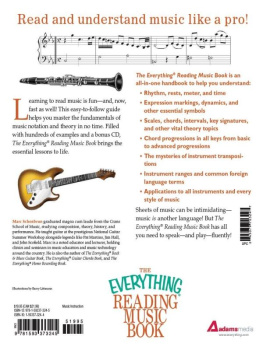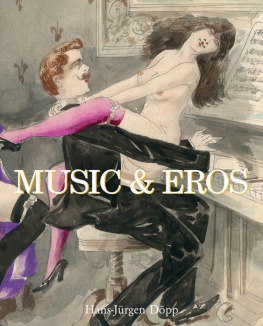The Music Instinct
How Music Works and Why We Cant Do Without It
BY THE SAME AUTHOR
Designing the Molecular World:
Chemistry at the Frontier
Made to Measure:
New Materials for the 21st Century
Lifes Matrix:
A Biography of Water
The Self-Made Tapestry:
Pattern Formation in Nature
Bright Earth:
Art and the Invention of Color
Molecules:
A Very Short Introduction
The Elements:
A Very Short Introduction
Critical Mass:
How One Thing Leads to Another
Elegant Solutions:
Ten Beautiful Experiments in Chemistry
The Devils Doctor:
Paracelsus and the World of Renaissance Magic and Science
Natures Patterns:
A Tapestry in Three Parts
Universe of Stone:
A Biography of Chartres Cathedral
The Music Instinct
How Music Works and Why We Cant Do Without It
PHILIP BALL

OXFORD UNIVERSITY PRESS
Oxford University Press, Inc., publishes works that further
Oxford Universitys objective of excellence
in research, scholarship, and education.
Oxford New York
Auckland Cape Town Dar es Salaam Hong Kong Karachi
Kuala Lumpur Madrid Melbourne Mexico City Nairobi
New Delhi Shanghai Taipei Toronto
With offices in
Argentina Austria Brazil Chile Czech Republic France Greece
Guatemala Hungary Italy Japan Poland Portugal Singapore
South Korea Switzerland Thailand Turkey Ukraine Vietnam
Copyright 2010 by Philip Ball
Published by Oxford University Press, Inc. 198 Madison Avenue, New York, New York 10016
www.oup.com
Oxford is a registered trademark of Oxford University Press
All rights reserved. No part of this publication may be reproduced, stored in a retrieval system, or transmitted, in any form or by any means, electronic, mechanical, photocopying, recording, or otherwise, without the prior permission of Oxford University Press.
Library of Congress Cataloging-in-Publication Data
Ball, Philip, 1962
The music instinct : how music works and why we cant do without it / Philip Ball.
p. cm.
Includes bibliographical references and index.
ISBN 978-0-19-975427-4
1. MusicPhilosophy and aesthetics. 2. Music and science.
I. Title.
ML3800.B2085 2010
781.1dc22 2010017795
1 3 5 7 9 8 6 4 2
Printed in the United States of America
on acid-free paper
Contents
Preface
Must the majority be made unmusical so that a few may become more musical? This question, in John Blackings seminal 1973 book How Musical Is Man?, apparently sums up the status of music in Western culture: it is composed by a tiny minority and performed by a slightly larger one, and these are the people we call musicians. But Blacking points to the contradiction inherent in the way that music is at the same time utterly pervasive in this culture: at supermarkets and airports, in movies and on television (every programme must have its theme tune), at important ceremonies, and now, on the private, portable soundscapes that snake ubiquitously from pocket to ear. My society, says Blacking, claims that only a limited number of people are musical, yet it behaves as if all people possessed the basic capacity without which no musical tradition can exist the capacity to listen to and distinguish patterns of sound. He implies that this assumption goes still further: his society presupposes shared ground in the way those patterns will be interpreted, understood, responded to.
And of course these assumptions are justified: we do have this capacity to hear music, and to develop a cultural consensus about how to respond to it. Yet we have, in the West at least, decided that these mental faculties are so commonplace that they are hardly worth noting, let alone celebrating or designating as musical attributes. Blackings experiences among African cultures in which music-making was far less rigidly apportioned between producers and consumers where, indeed, those categories were sometimes meaningless helped him to appreciate the oddness of this situation. Personally, I suspect that it might in any event be easy to overplay that schism, which, to the extent that it exists at all, may prove to be partly a transient aspect of the emergence of mass media. Before music could be recorded and broadcast, people made it themselves. And now it is increasingly easy and cheap to make and broadcast it yourself, huge numbers are doing so. Yet we still tend to ascribe primacy of musicality to the production mode. In this book I hope to show why the capacity to listen to and distinguish patterns of sound, which we nearly all possess, is the essence of musicality. The book is about how this capacity arises. And I want to suggest that, while hearing great music played by great performers is an incomparable pleasure, this is not the only way to get enjoyment and satisfaction from music.
Because the question of how music does what it does is so phenomenally complicated and elusive, one could easily construct an illusion of cleverness by pointing out flaws in the answers offered so far. I hope it will be clear that this is not my intention. Everyone has strong opinions on these matters, and thank goodness for that. In a subject of this nature, ideas and views that differ from ones own should not be targets for demolition, but whetstones for sharpening ones own thoughts. And since it is likely that everyone will find something with which to disagree in this book, I hope that readers will feel the same way.
For helpful advice and discussion, providing material, and for general support or even just good intentions, I am grateful to Aniruddh Patel, Stefan Koelsch, Jason Warren, Isabelle Peretz, Glenn Schellenberg, Oliver Sacks and David Huron. I am once again much indebted to my agent Clare Alexander for her encouragement, insight and incomparable combination of experience, diplomacy and resolve. I am thankful to be in the safe and supportive editorial hands of Will Sulkin and Jrg Hensgen at Bodley Head. And I cherish the music that Julia and Mei Lan bring into our home.
I should like to dedicate this book to everyone with whom I have made music.
Philip Ball London November 2009
Authors Note
To listen to the musical examples illustrated in this book, please visit www.oup.com/us/themusicinstinct
1
Prelude The Harmonious Universe
An Introduction
Fourteen billion miles away from Earth, Johann Sebastian Bachs music is heading towards new listeners. An alien civilization encountering the Voyager 1 or 2 spacecraft, launched in 1977 and now drifting beyond our solar system, will discover a golden gramophone record on which they can listen to Glenn Gould playing the Prelude and Fugue in C from the second book of The Well-Tempered Clavier.
You couldnt fit much on a long-playing record in 1977, but there was no room for a more extensive record collection the main mission of the spacecraft was to photograph and study the planets, not to serve as an interstellar mobile music library. All the same, offering extraterrestrials this glimpse of Bachs masterwork while denying them the rest of it seems almost an act of cruelty. On the other hand, one scientist feared that including Bachs entire oeuvre might come across as an act of cosmic boasting.
Recipients of the Voyager
Next page











